Kraków 2024-11-28
EZT Pesa Bydgoszcz EN64-006.
EZT EN64-006 was built in November 2014, at PESA Bydgoszcz. Factory number E735BNA004. Other designation 40WE / 40 WEa. The train is 3-carriage; EVN: 94 512 130 310-7 (PL-KMAL), EVN: 94 512 130 311-5 (PL-KMAL), EVN: 94 512 130 312-3 (PL-KMAL). In December 2014, it was delivered to Kraków. The train runs on SKA (Fast Agglomeration Railway) lines. In 2020, level P4 was repaired at ZNTK Mińsk Mazowiecki. Initially, the train had orange, white and navy blue colours, which were changed in 2023 to yellow, grey and navy blue, Koleje Małopolskie.
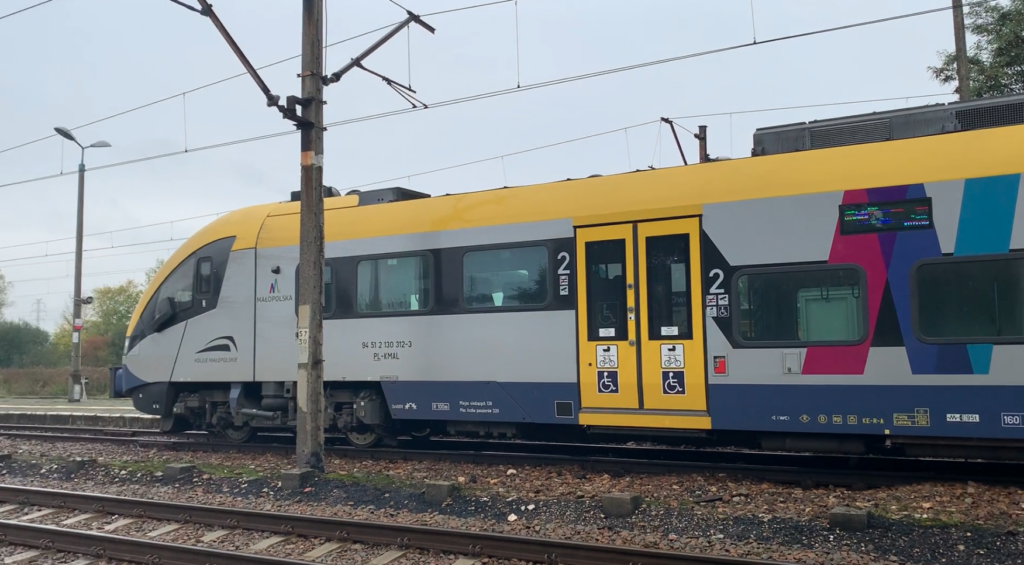
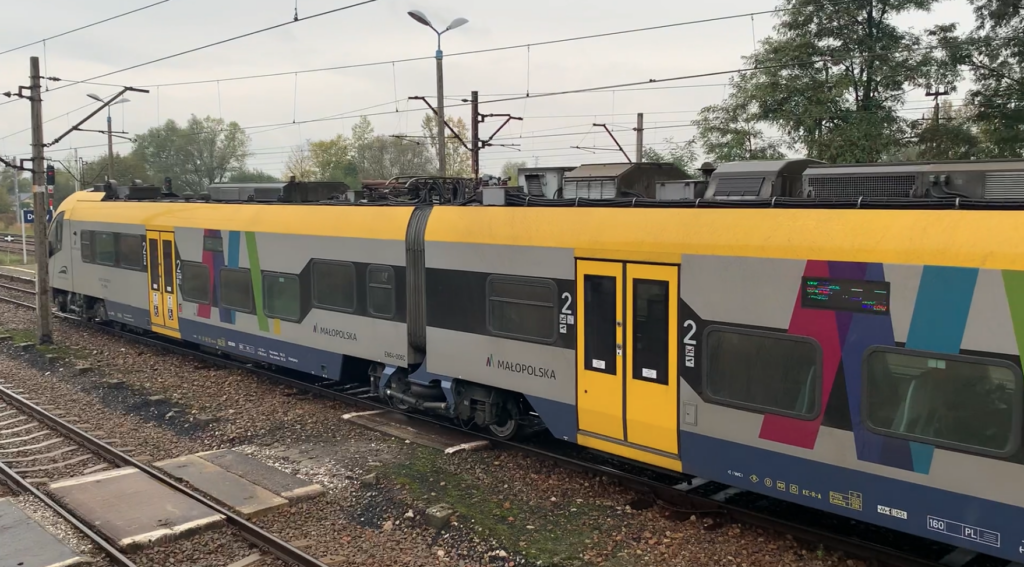
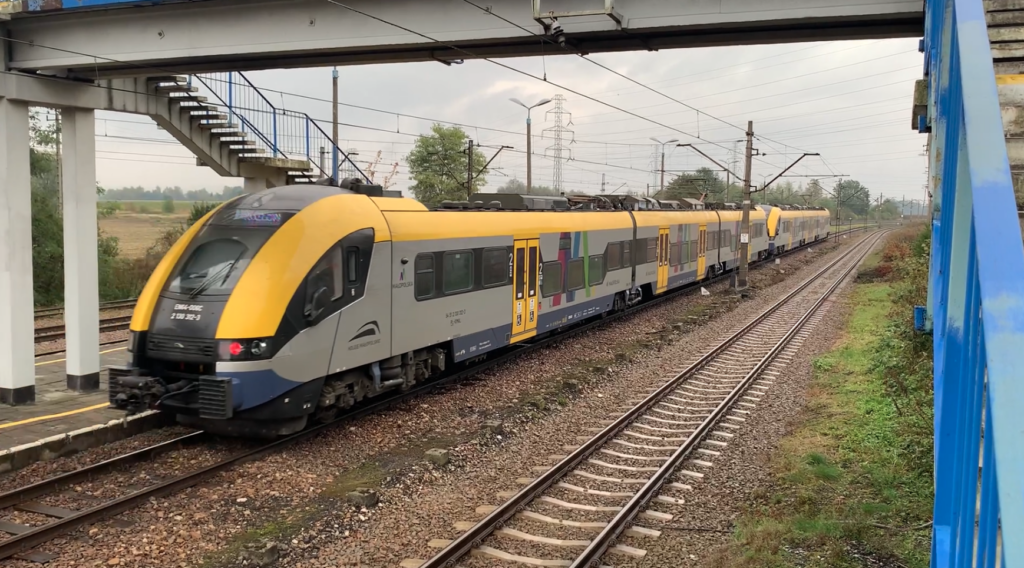
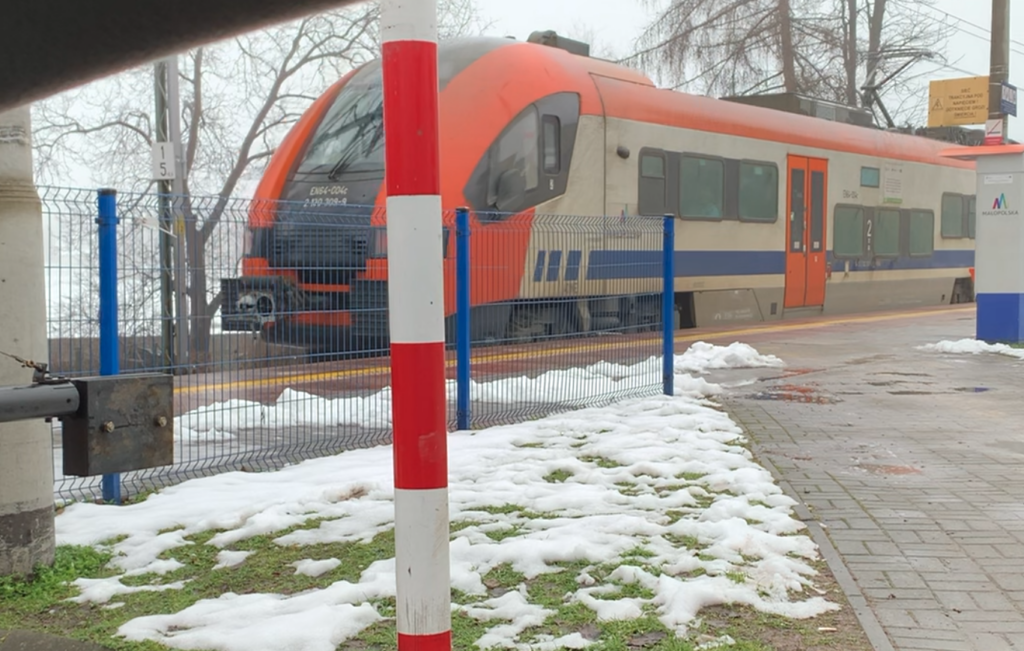
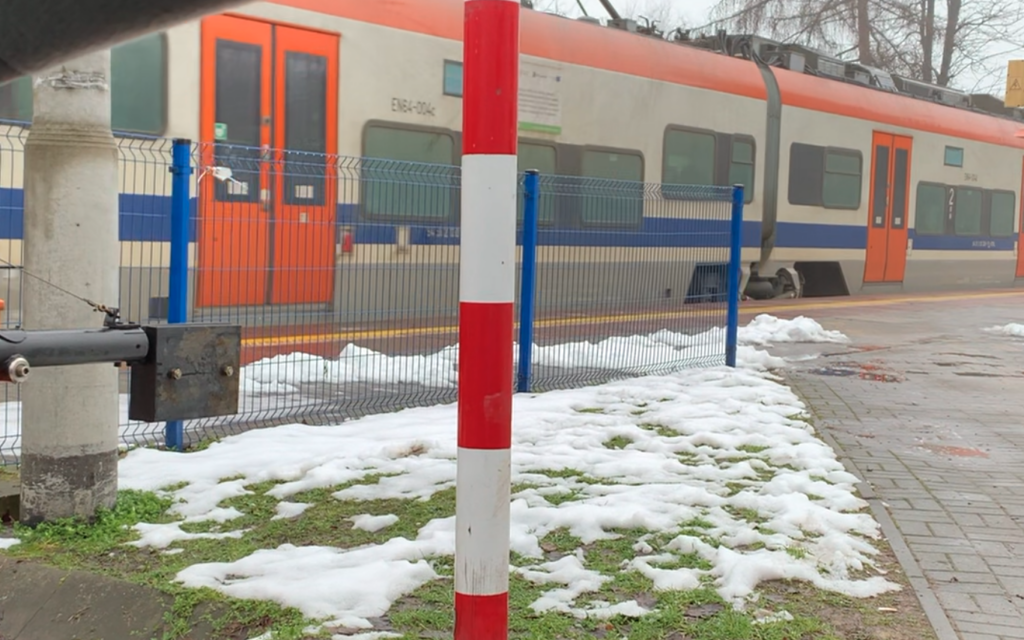
EZT Pesa EN64 = 40WE.
The EZT offered under the brand name “Acatus Plus”, is a family of modern passenger trains manufactured by Pesa Bydgoszcz SA. The train was designed as another vehicle, after the 4-car “Acatus II” series EN77. This time, the new vehicle is a 3-carriage one. Two versions 40WE = EN64 and 40WEa = EN99 were developed in parallel. The trains were manufactured for the following provinces: Podkarpackie (PolRegio), Świętokrzyskie (PolRegio) and Małopolskie (PolRegio and KMŁ).
The structure of the wagons is steel, self-supporting. The wagons can only be disconnected during repairs. The trains are adapted for multiple travel. The EZTs are connected into sets using Scharfenberg type couplers. The fronts of the trains have absorbers to absorb collision energy, with the so-called “anti-climbing” function. Each carriage has one or two pairs of doors of the sliding-sliding type, which are moved by an electric system. An additional sliding step is placed under the doors. The number of doors in the train is adapted to the average flow of passengers. These doors are also used by the train crew.
The EZTs have a Bo’2’2’Bo’ axle arrangement. The end bogies are driving bogies. Each bogie has two asynchronous electric motors with a power of 360 kW each. Torque is transferred via two-stage gears and flexible clutches with rubber wedge-type elements. The driving bogies are equipped with a sanding system and an oil lubrication system for the edges. The design speed is 160 km/h.
The rolling bogies are of the Jacobs type used between the carriages. The ends of the adjacent sections are based on a bogie using one pair of pneumatic springs, which act as the second stage of suspension. All wheel sets have rocker guidance, and the first stage of suspension is implemented by coil springs. The trains have a Knorr-Bremse type braking system. Brake discs are mounted on all wheels, in the form of friction rings. Each wheel has an individual, integrated brake caliper. The service brake of the vehicles is an electrodynamic brake, which has the ability to recuperate energy to the traction network, cooperating automatically with the electropneumatic brake.
The electrical system has been equipped with traction converters (inverters), which are mounted on the roof of the end members. One inverter powers two engines of one driving bogie. The vehicles use inverters from the Spanish company Ingeteam.
Written by Karol Placha Hetman
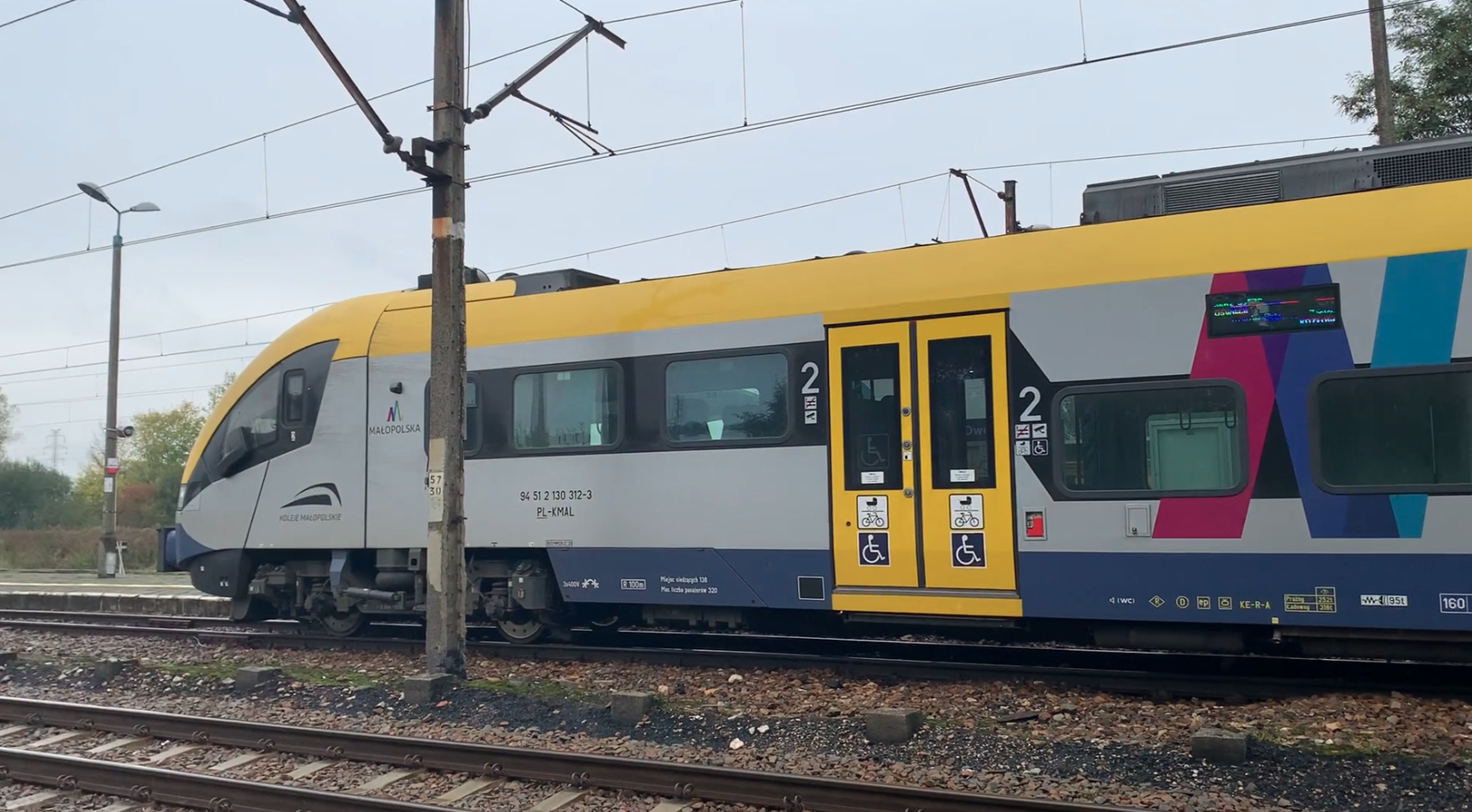
Leave a Reply
You must be logged in to post a comment.